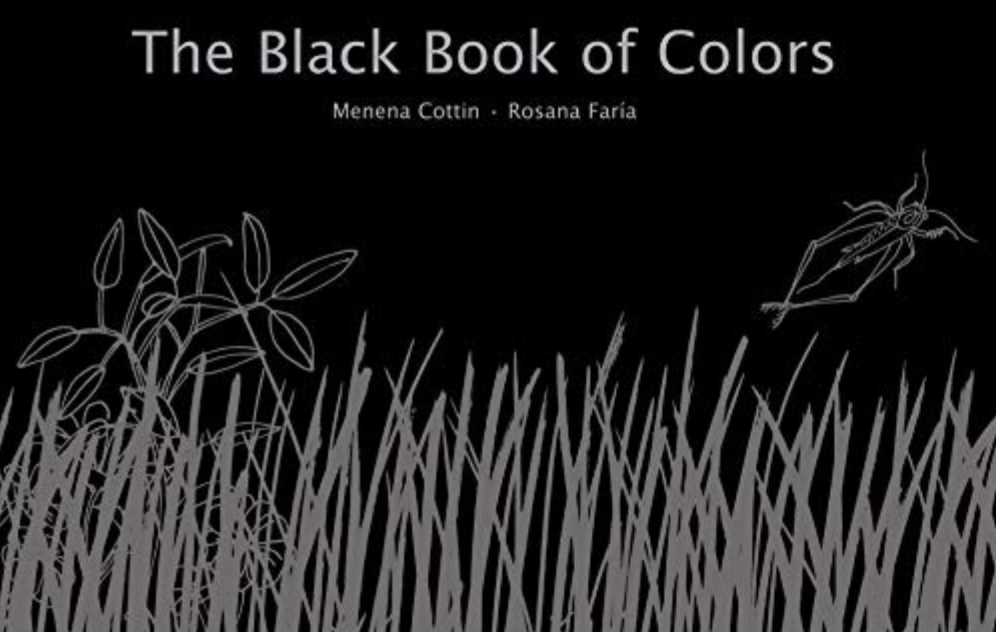The Black Book of Colors
Book Module Navigation
Summary
The Black Book of Colors examines the nature of color and our sense experiences more broadly.
The Black Book of Colors is about a boy named Thomas describing the way different colors taste, feel, smell, and sound. Written in American English as well as Braille, the book allows readers to experience the world as someone without sight might.
Read aloud video by E.LumiTV
Guidelines for Philosophical Discussion
The Black Book of Colors is a book that looks at color from every sense other than the one that we typically experience color with–sight. There are several different ways to examine this book. The first is to address the question, “What is color?” From a young age, children are taught about color: how to use it and mix it and understand it. Using the first set of questions, you can look into color and its properties.
Philosophers have wondered about the nature of color. One issue they raise is whether objects actually are colored. After all, physicists treat the world as made up of things that do not have color. From that point of view, a rainbow is nothing but a bunch of atoms that happened to interact with our sense organs to produce the experience of color. But other philosophers think it is a mistake to treat colors as just an effect that light has on our eyes.
Depending on the age of the children that you are working with, you might need to watch out for students getting technical and talking about color in scientific terms based on how light reflects off of things. If these questions arise, you can always refer back to the book and show how colors are portrayed without any color besides black. You can also ask students if they believe that colors are just light or if there is more to them.
One classic philosophical problem relating to color is “the inverted spectrum.” The issue is whether it might be possible that someone else has the experience you have when you see, say, red, but call it blue. How can you tell whether we all experience the very same thing when we look at red things?
The Black Book of Colors is also really interesting because it provides an opportunity to get students thinking about how blind people perceive the world, and whether they can be taught the meaning of colors. Students learn from an early age about blind people and sign language, but they aren’t really given the chance to think how blind people learn sight-based information, like color. Can blind people sense color? Can blind people be taught to distinguish between different colors?
John Locke was the first philosopher to have a stance on blindness. He believed that people gain some pieces of information from one sense, but other pieces of information are taken from multiple senses. He also said that if someone doesn’t have full use of a sense, they will not be able to learn the information that is obtained through that sense. For example, a blind person will not know about visual input like color. Locke defined information relating to the areas of “space, rest, motion and figure” as areas of information that can be obtained through multiple senses, so people lacking one sense, like blind people, can experience them.
Questions for Philosophical Discussion
Color
- What is your favorite color? Why?
- How would you describe some of the favorite things about your color?
- How would you describe your favorite color using senses other than sight?
- Do those words convey the experience of seeing your color?
- What is the difference between a color and things that are that color?
- In the book, Thomas says that black is the king of the colors. What do you think he means?
- Can colors have a king? Do you agree that black would be the king?
- Can color have a queen? What do you think the queen of color would be?
- Can colors have gender?
- Can something not have color?
- Does everyone see the same color?
- Is color one thing or many things?
Blindness
- Close your eyes. Think about your favorite color. Tell us about it.
- Did we experience that color? How?
- Is it possible to show a blind person color? Why or why not?
- If a person can’t see color, are they blind? Why or why not?
- Do people who are blind and people who have sight experience color the same way? How is it similar or different?
- If not everyone can see color, does it mean that it’s really there?
- Do you know someone who is colorblind (or are colorblind yourself)? How might their perceptions of color be different from yours?
- Do blind people need to be taught color, or is it something that they learn on their own?
- If a blind person knew that strawberries were red, do you think if they had surgery done to make them able to see that they would recognize a strawberry as a strawberry just by looking at it? Why or why not?
- Are all of our senses connected or are they distinct?
Original questions and guidelines for philosophical discussion by Rosalie Shays. Edited June 2020 by The Janet Prindle Institute for Ethics.
Find tips for leading a philosophical discussion on our Resources page.







